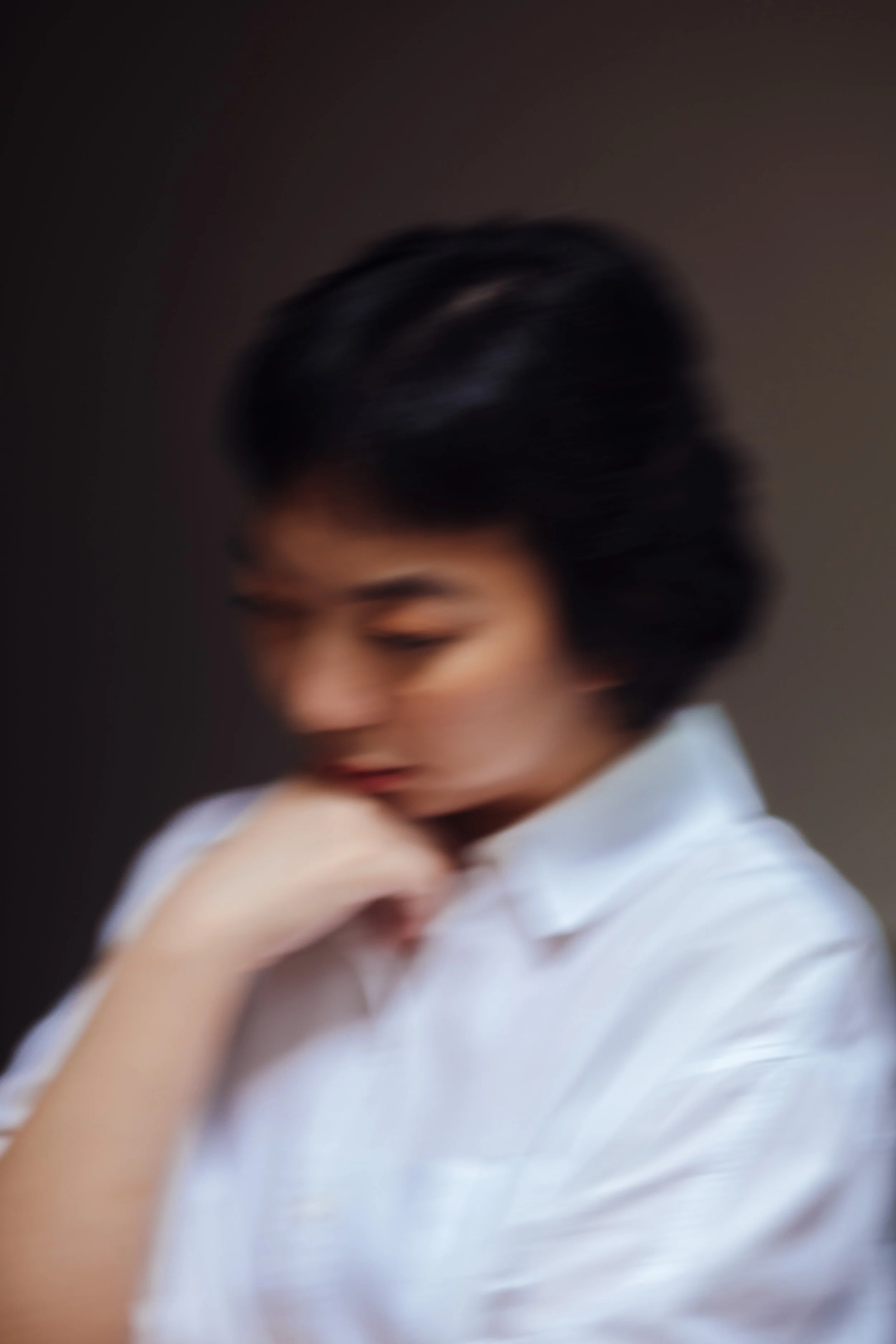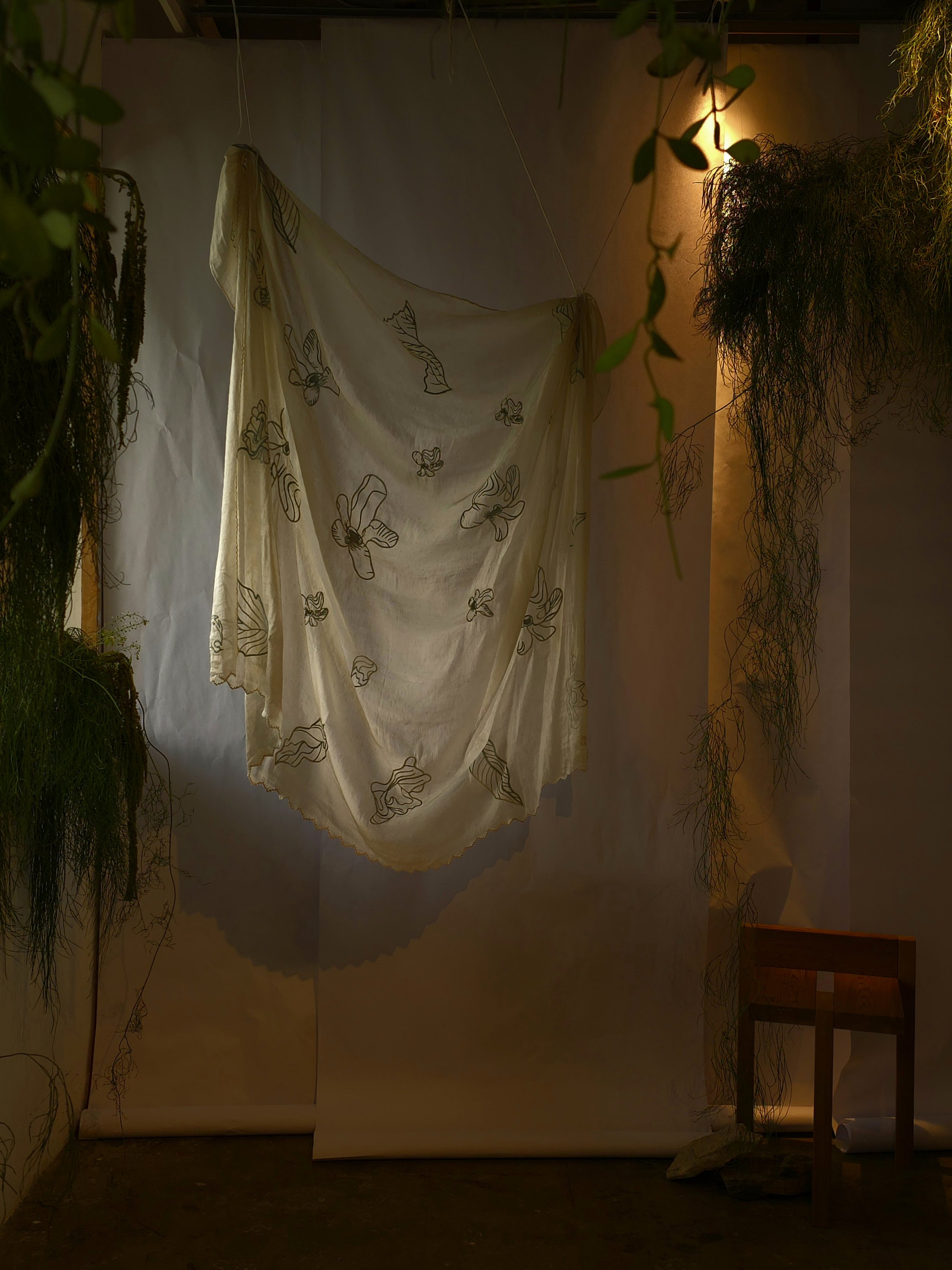Conversation with Fashion Designer Gabbie Sarenas
Love Letters Composed in Piña Silk and Floral Embroidery
Gabbie Sarenas is a Filipino fashion designer who established her eponymous label in 2016 as a love letter to the Philippines. A graduate of SoFA Design Institute with a Bachelor of Arts in Fashion Design & Marketing Management, Sarenas honed her craft working with established Filipino designer Hindy Weber, and further refined her technical skills through draping courses at L'École de la Chambre Syndicale de la Couture Parisienne.
Sarenas’ collections have earned recognition both locally and internationally, including the Pura Escurdia Award at Ternocon 2023, Best in Fashion at ArteFino Fair in 2018, the Metro Magazine Special Citation for Fashion and Style in 2019, and the NewPH Award from Mega Magazine in 2019. Her work has been showcased at Vancouver Fashion Week Fall-Winter 2017 and most recently at Vogue Threads Paris 2024, where she presented her reinterpretation of the traditional Filipino terno.
Her work honours Philippine creativity through romantic storytelling and meticulous handwork, particularly her signature embroidery on traditional textiles such as piña, abaca, and hablon. What distinguishes Sarenas’ approach is her commitment to ‘malasakit sa detalye’, a Filipino concept of sincere care and attention to detail that permeates every aspect of her work.
This philosophy extends beyond aesthetics to encompass the relationships she builds with her in-house team of artisans, the research she conducts into Philippine history and culture, and the thoughtful pace at which she releases collections. Her recent immersive activation, Sa Panaginip (In a Dream), in October 2025 expanded her vision beyond fashion into a multi-sensory experience. The pop-up featured sampaguita-scented candles, furniture installations, and her signature embroidered tapestries, demonstrating her commitment to building a comprehensive world that celebrates Filipino craftsmanship and culture.
In this conversation, Sarenas discusses the evolution of her practice across nearly a decade, from her initial captivation with hand embroidery to her current investigations into how fashion can serve as both cultural archive and intimate expression.
Gabbie Sarenas. Photo by Joseph Pascual.
You have dedicated your career to preserving and reimagining traditional Filipino textiles and craftsmanship. What initially drew you to this path in fashion, and how did your experiences studying both locally and internationally influence your design philosophy?
I am not sure when I became so fascinated by it, but I do remember being enamoured with handmade or anything done by hand. I emphasised these techniques during my college years in fashion school. In 2015, I was researching what I could do for my brand, as a kind of thesis. I started with the piña as it is the most recognisable Filipino fabric, and it is elegant yet humble.
I know who I am today is a product of time, the influence of mentors, education and most of all, experience, which has been my best teacher.
I am grateful for the education that was provided for me. One thing led to another, like getting a good internship and meeting the right people. I believe that learning never stops, so I encourage myself to continually study and learn
‘__________, Nagmamahal, __________’, August 2018. Photo by Koji Arboleda. Image courtesy of Gabbie Sarenas.
You work closely with artisans who do hand embroidery and traditional Filipino techniques. Could you tell us about your team and how you have built these relationships?
We have an in-house team that does our hand embroidery. We started with subcontracting, but in the end, we found a group of women who could learn the simple techniques of hand embroidery, and the rest is history.
The relationship I have with my team is collaborative. I give the directives while listening to their suggestions. I like that they are proactive and let me know if something will work or not.
Sampaguita embroidery starting points and sketches. Image courtesy of Gabbie Sarenas.
The concept of ‘malasakit sa detalye (solicitude in the details)’ appears central to your work. How does this Filipino philosophy influence your design decisions, from the hidden embroideries to the buildable, versatile pieces you create?
I think from what we create, it has to be rooted in the brand DNA, “A Love Letter to The Philippines”. With that tagline, it is romantic, nostalgic, and thoughtful. Working with that philosophy, I see that my work is precious, and I want to protect it because of the tangible and intangible values it represents. The brand is constantly evolving.
From sampaguita flowers to rice stalks to poetic text, your embroidery motifs vary across collections. It has become your signature, too. How do you develop this visual vocabulary for each collection, and what guides your choices?
From the time we made the sampaguita embroidery, it has barely changed, as the nature of it is timeless. Consistency with all the brand codes is what helps create more combinations for us to put out. Tradition is important. We consistently look for techniques used in the past, and think about why it was used. When I feel lost, I go back to the codes and look at the archives.
Ternocon, 2023. Photos by Patrick Diokno. Image courtesy of Gabbie Sarenas.
You mentioned in an interview for Nolisoli Philippines about experiencing creative blocks where inspiration completely eluded you. How do you work through these periods, and what techniques have you developed to reconnect with your creativity?
I think as we create collections or pieces that are intentional, the burnout will come naturally, as it is the body’s way of asking for rest.
Firstly, it was acceptance and knowing myself. Secondly, I think about how to work around this period and take note of when it happens. I also think about how I can help myself to be more consistent.
As Miuccia Prada said, “study study study”. I am a firm believer in education and the expansion of knowledge beyond my field, and being consistent in pursuing this.
‘Tanan’, 2024. Bench Fashion Week 2024. Photos by Bimpoman. Image courtesy of Gabbie Sarenas.
For Bench Fashion Week Spring/Summer 2024, your ‘Tanan’ collection explored elopement and intimate romantic moments, drawing from Filipino films and your clients’ love stories. Can you walk us through the process of making that collection?
This was an exciting collection. I remember being relaxed in the car, looking out, seeing the fields and looking at some images that I had collected and resonated with. That was the time when I had the idea of ‘Tanan’. It means taking time off and a sense of ease.
At the time, we had clients who were getting married. It was inspiring to hear the stories they trust us with.
During the building of the collection, I watched the film, Hihintayin Kita Sa Langit by Carlos Siguion-Reyna, and this solidified the storyline of the collection. Other than the storyline, I loved the cinematography, the drama and the location.
‘Sabado’, Vogue Threads Paris 2024. Photos by Artu Nepomuceno. Image courtesy of Gabbie Sarenas.
Having shown recently at Vogue Threads Paris 2024, how do you approach presenting your work on international platforms?
We present it with sincerity and balance, and editing is key.
I consider how it will be presented, where it will be presented, and who it will be presented to. I know that I am not only representing myself but also the Philippines, and I do my best.
Sa Panaginip pop-up, October 2025. Photo by Everywhere We Shoot. Image courtesy of Gabbie Sarenas.
Your recent ‘Sa Panaginip (In a Dream)’ pop-up expanded beyond fashion into a multi-sensory experience, featuring a sampaguita-scented candle collaboration, furniture installations, flower arrangements, and your own embroidered tapestries. How did this project come about?
I am so in love with this experience as it was meant to start a world and create a blueprint for the brand. I worked closely with Melvin Mojica for the curation, Saan Saan for the candle and scents, Akong Gugma for the set design, Lamana for the furniture, Hatch and Hoolman for the food and drinks, and UnderMaintenance for the space and merchandise. Each person was carefully selected as they are the people we have worked with and trust. More importantly, they are experts in their fields and they are not only my business partners, but my friends. Collaborations and conversations are important, and this was work that did not feel like work.
Backstage photos of ‘Tanan’, 2024. Bench Fashion Week 2024. Photos by Aniken Dela Cruz. Image courtesy of Gabbie Sarenas.
You have built a business model around releasing one collection per year, which goes against the current fashion calendar. How has this slower and more intentional approach affected your brand's growth and client relationships?
Releasing slowly is more intentional for smaller brands. It works better for us. Each collection or drop has to be fully baked to be served, and time is needed for research and development.
I am not closing the door to putting out collections when our production gets bigger, but at every step, everything is done thoughtfully.
Finally, which stories or aspects of Filipino culture and history are you eager to explore next, and where do you see your creative journey taking you in the coming years?
I see us continuing the journey, and I think we are at an exciting time when a lot of doors are opening up, and the freedom to experiment and scale with intention is within our grasp. I do not have an exact story or culture that I want to explore, but I am excited for the journey and the surprises along the way.
The interview has been edited.
Explore more of Gabbie Sarenas’ work via her website here or her Instagram @gabbiesarenasph.





















